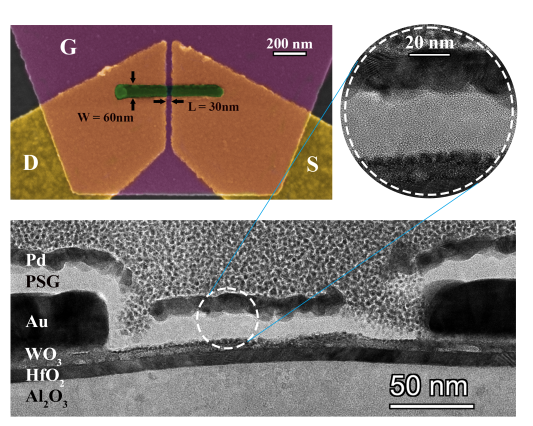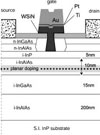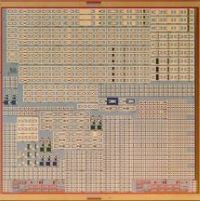Nanoscale Protonic Programmable Resistors for Analog Deep Learning
Interest in engineering the ideal programmable resistor for analog deep learning applications has skyrocketed due to the increasing workloads of deep learning problems. Ion intercalation-based programmable resistors have emerged as a potential next-generation technology for analog deep learning applications. While there have been previous successful demonstrations using Li+ and O2- as the working ion, the former is incompatible with Si-integration whereas the latter is too large and heavy to be moved around, limiting the operation speed and energy efficiency. In this regard, the H+, the proton, as the lightest ion available and eminently CMOS compatible is an interesting candidate.
We have recently demonstrated the first back-end CMOS-compatible non-volatile protonic programmable resistor enabled by the integration of phosphosilicate glass (PSG) as the proton solid electrolyte layer with Pd as proton reservoir and WO3 as active channel. PSG is an outstanding solid electrolyte material that displays both excellent protonic conduction and electronic insulation characteristics. Moreover, it is a well-known material within conventional Si fabrication, which enables precise deposition control and scalability.
In follow on work, we have further optimized the material stack and fabrication process to realize nanoscale devices. The devices show excellent modulation behavior by means of dynamic range, the number of states, modulation symmetry, retention, endurance, and energy efficiency, all desirable characteristics to realize analog accelerators for deep learning applications.
Recent publications:
RC-305 Onen, M., J. Li, B. Yildiz and J. A. del Alamo, “Dynamics of PSG-Based Nanosecond Protonic Programmable Resistors for Analog Deep Learning.” 2022 IEEE International Electron Devices Meeting (IEDM 2022), San Francisco, CA, December 3-7, 2022, pp. 38-41. (DOI) (Slides)
RJ-221 Onen, M., N. Emond, B. Wang, D. Zhang, F. Ross, J. Li, B. Yildiz and J. A. del Alamo, "Nanosecond Protonic Programmable Resistors under Extreme Electric Field.” Science, Vol. 377, pp. 539-543, 29 July 2022. DOI: 10.1126/science.abp8064.
RJ-212 Onen, M., N. Emond, J. Li, B. Yildiz, and J. A. del Alamo, " CMOS-compatible Protonic Programmable Resistor based on Phosphosilicate Glass Electrolyte for Analog Deep Learning.” NanoLetters, Vol. 21, pp. 6111-6116, 2021. DOI: 10.1021/acs.nanolett.1c01614.
RJ-208 Yao, X., K. Klyukin, W. Lu, M. Onen, S. Ryu, D. Kim, N. Emond, I. Waluyo, A. Hunt, J. A. del Alamo, J. Li, and B. Yildiz, "Protonic Solid-State Electrochemical Synapse for Physical Neural Networks.” Nature Communications, 11:3134, 2020. DOI: 10.1038/s41467-020-16866-6.

|


